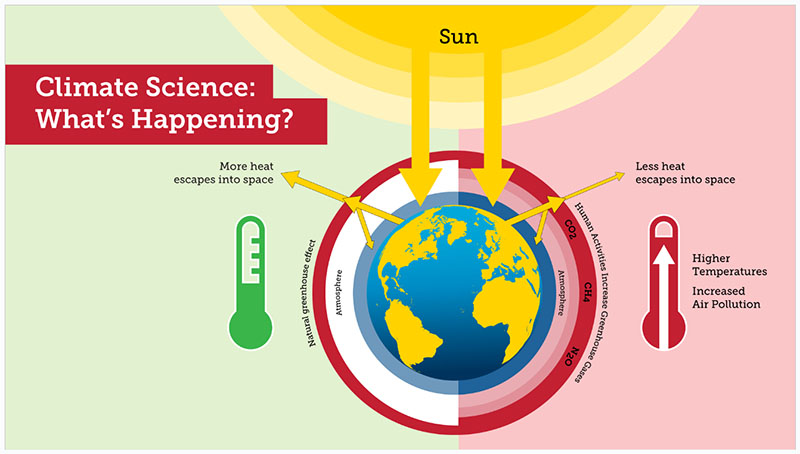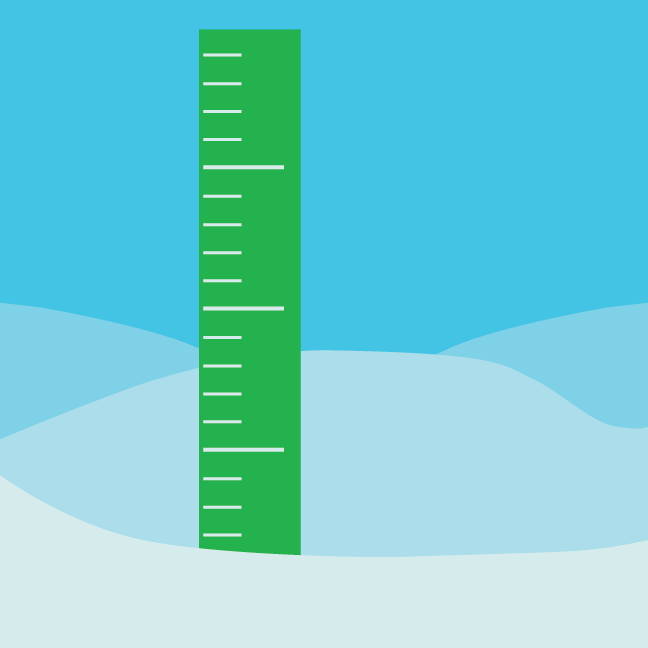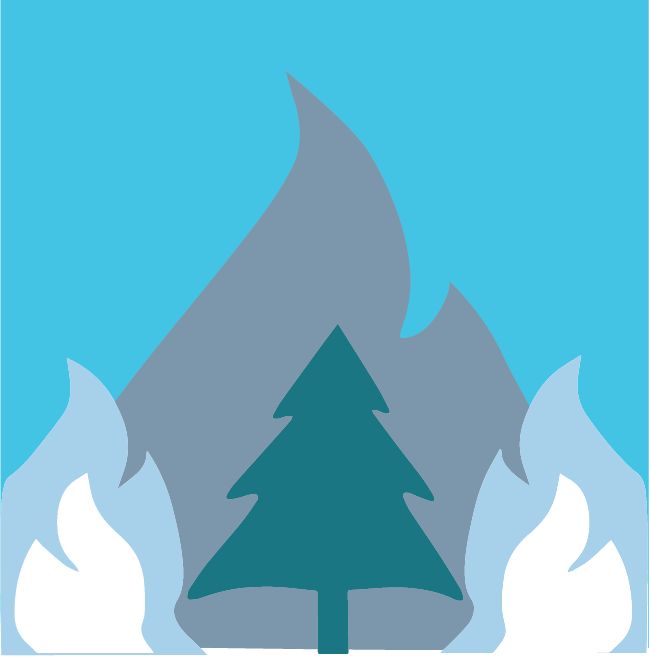Colorado Goals & Actions - Equitable Climate Future
Does climate change exist?
Yes.
The Earth’s climate has seen changes since the dawn of time. This can happen naturally through shifts in our orbit around the sun, solar cycles and fluctuations in solar radiation, and volcanic activity. Human activity can also impact the planet’s climate.
Since the late 19th century, global temperatures have risen about 2 degrees Fahrenheit, and have continued to increase at faster rates through the mid-20th century, according to NASA. In fact, during the past 50 years alone, global temperatures have increased about 1.5 degrees Fahrenheit. Colorado’s climate has been slightly above these global changes, as the state’s average temperature has increased over 2 degrees Farenheit in the past half-century.

What is climate change?
Global climate change refers to a long-term change in temperatures, either warming or cooling. Human-caused climate change refers to the more rapid increases in temperature that are currently taking place, as a result of increasing greenhouse gas emissions. The greenhouse effect is an important component of our atmosphere that keeps our temperatures at a pleasant and liveable level. But, as we add more carbon dioxide and other greenhouse gases to the atmosphere, the greenhouse effect increases. Essentially, we’re “putting a heavier blanket” over the Earth, trapping in more heat. This is similar to when your body has a fever and you experience an increase in symptoms throughout your body. The Earth’s higher temperature is resulting in an increase of “symptoms” to the Earth’s oceans and lands.

Climate Equity

Coloradans are already feeling the impacts of climate change and there is evidence that it affects some people more than others. Climate change is a “threat multiplier,” meaning it makes things worse for people already affected by historic and current harms to health, social wellbeing, political influence, economic conditions, or environmental quality. These harms exist due to the impacts of structural racism, classism, pollution, and lower historic investment in community infrastructure and resources. People with health issues are also harmed more by climate change impacts such as heat extremes and poor air quality from wildfires.


Snowpack reduction
The snow that collects in our mountains is essential for feeding Colorado’s water reservoirs throughout the year. One key report states that warming temperatures have resulted in earlier and lower peak snowpack, which reduces runoff and water supply for the basin. According to a 2022 Environmental Protection Agency analysis, the snowpack at the start of spring in the Western United States dropped 23% from 1955 to 2022, with 93% of the sites measured showing declines.
Drought
With less water comes less drinking water, drier soil, and thirsty crops. This presents big challenges for Colorado’s farmers. Since 2000, The U.S. Drought Monitor shows that Colorado has experienced four severe and widespread droughts (2002, 2012, 2018, and 2020). According to the Fourth National Climate Assessment, it is likely that droughts in the Southwest (including Colorado) will continue to increase in frequency and severity. Less water severely impacts the food we can grow because soil moisture becomes less reliable and crops increasingly face more dangerous pests, according to a 2020 U.S. Department of Agriculture study. This report even discussed one Colorado study, which concluded that dairy cows produce less milk when they’re forced to deal with excessive heat.


Floods
According to a 2021 study led by scientists at the Colorado-based National Center for Atmospheric Research, “Climate change will significantly alter future patterns of flooding.” Historically, Colorado has experienced numerous devastating floods, and the precise changes to floods in a warmer climate remain uncertain for Colorado. However, the most extreme rainstorms are expected to become more intense as the climate warms, and the expected increase in burned areas from wildfires is likely to heighten the risk of landslides when heavy rain falls on burn scars.
Wildfires
Colorado’s five most destructive wildfires have all occurred since 2012. A 2016 study concluded that the area burned by wildfires in the western U.S. was almost double what it would have been without climate change. According to the Third National Climate Assessment, “Increased heat, drought, and insect outbreaks, all linked to climate change, have increased wildfires” in Colorado and other states in the region. An increase in the number and size of wildfires over Colorado have impacted recreation, ecosystems, and air quality.


Wildlife
Climate change is putting tremendous pressure on Colorado’s wildlife. Because of higher temperatures, many species in the Rocky Mountains are searching for higher and cooler altitudes, which can damage fragile ecosystems. Consistently hotter weather also helps the spread of parasites and diseases that are endangering animal populations. Warmer temperatures and increased frequency of drought also decrease water quality, which impacts fish populations.